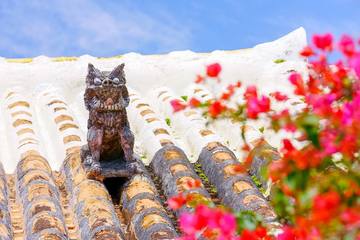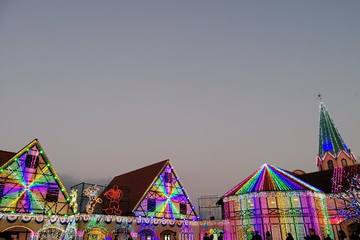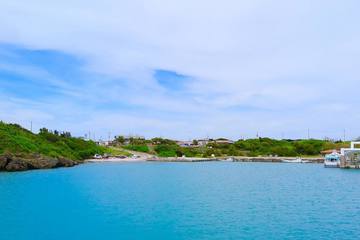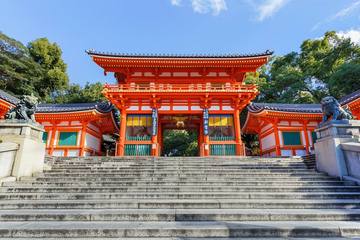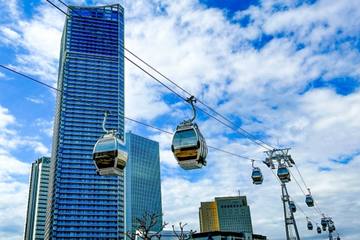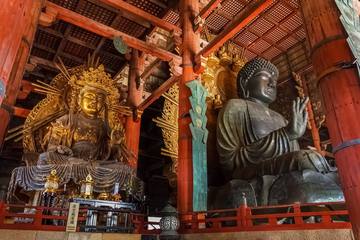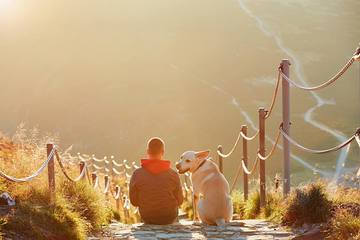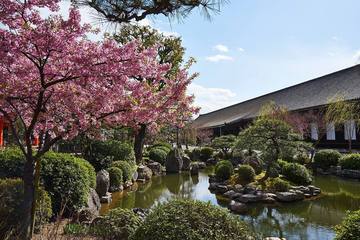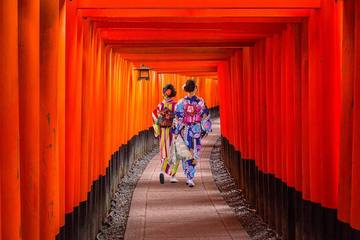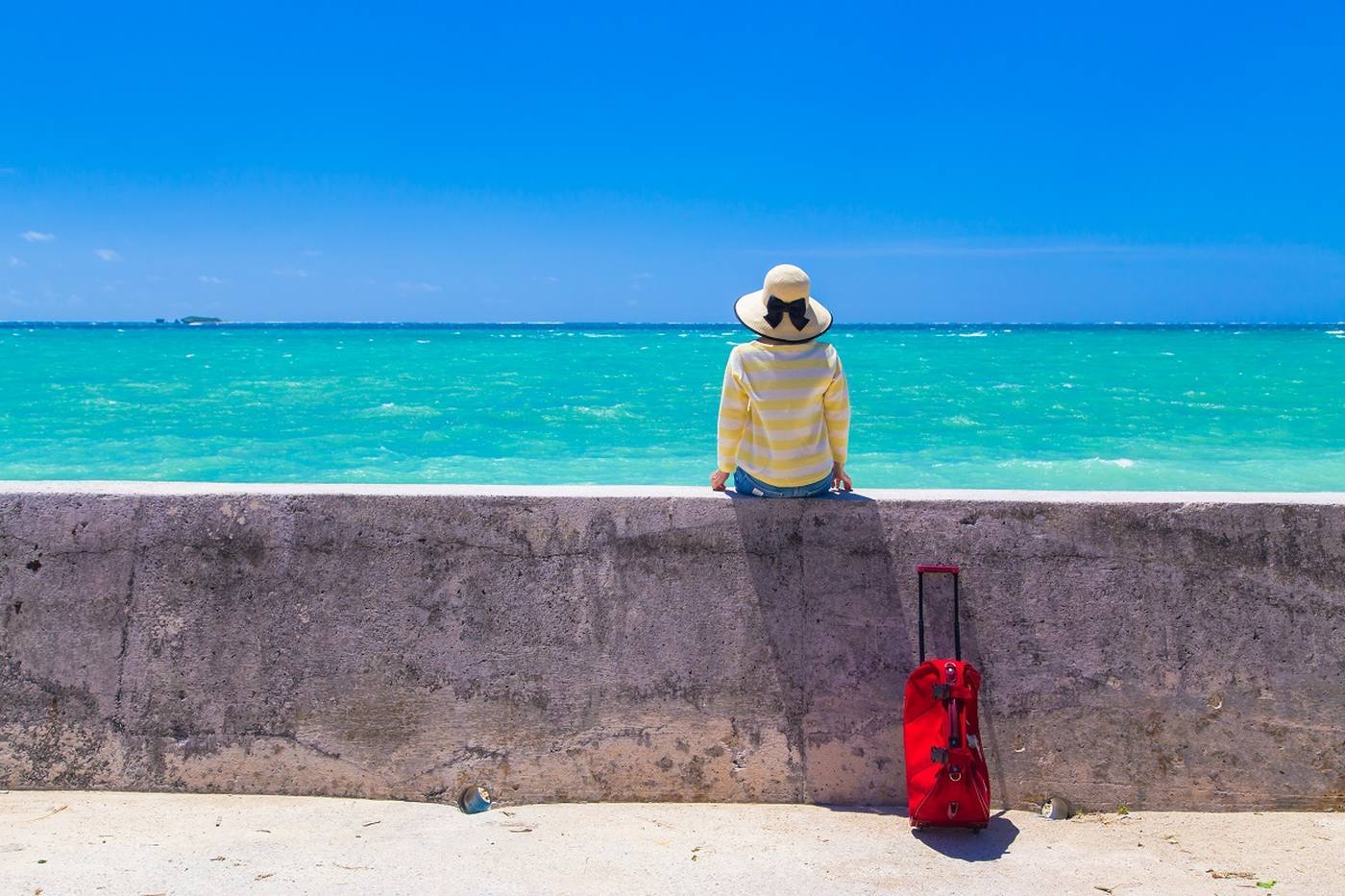
Top 23 Recommended Tourist Spots in Okinawa! We also introduce main island and remote island itineraries
Representing Japan's iconic beach resort, Okinawa. Not only can you enjoy the beautiful ocean, white sandy beaches, and nature like mangroves, but there are also World Heritage sites and numerous historical landmarks to explore.
From well-known tourist destinations to hidden gems for advanced explorers, we will thoroughly dissect Okinawa from various angles!
*This article is translated using ChatGPT.
For the latest information on each tourist spot and facility, we recommend checking the official website.
- 日本 、沖縄県、宮古島、石垣島
INDEX
Popular Spots and Activities on Each Island
Cape Maeda & Blue Cave, Okinawa
Relaxation and Water Activities on Iriomote Island
Historical and Natural Heritage Spots in Okinawa
Himeyuri no Tou (Himeyuri Peace Memorial)
Makishi Public Market (Formerly Naha Public Market)
Nakagusuku Castle and Zakimi Castle
Okinawa Prefectural Museum & Art Museum
Kokusai Dori (International Street)
Day Trip Model Course for Miyakojima
Ishigakijima Day Trip Model Course
Unveiling New Discoveries Every Visit: Your Okinawa Journey
Popular Spots and Activities on Each Island
Cape Maeda & Blue Cave, Okinawa

The Blue Cave, renowned for snorkeling and diving, is a prominent attraction on Okinawa's shores. The cave extends around 30 meters deep. Sunlight filtering through the cave's entrance penetrates the clear seawater and reflects off the seafloor, giving the entire cave a blue hue, thus earning it the name "Blue Cave."
In this underwater realm of exceptional transparency, you can relish tropical fish and coral reefs of the East China Sea. With options ranging from snorkeling-only plans to introductory diving experiences, even beginners can comfortably partake in these activities.
Its accessibility is another highlight, with a convenient one-hour drive from Naha Airport. Also, don't miss the opportunity to enjoy the blue sea and sunsets from Cape Maeda. There are even sightings of humpback whales offshore from February to the end of March.
Area: Central Okinawa Main Island
Relaxation and Water Activities on Iriomote Island
Iriomote Island, often called the Galápagos of the East, is situated closer to Taiwan than to mainland Okinawa. This remote island harbors unique flora and fauna, including the Iriomote wildcat.
Much of Iriomote Island is covered in subtropical jungle, famed for hosting Japan's largest mangrove primeval forest.
From leisurely enjoyment of unparalleled nature and landscapes unseen on mainland Japan to engaging in water activities, the island offers a range of experiences. Among the well-known sites is "Ida no Hama," dubbed the "Hidden Beach," accessible only by boat. Another favorite is the "Pinaisara Falls," the largest waterfall in the prefecture with a drop of about 60 meters, offering canoeing and walking tours.
Moreover, Iriomote Island, certified as Japan's first starry sky reserve, treats visitors to a planetarium-like night sky, including the Milky Way.
Area: Yaeyama Islands Area
Miyako Island
Miyako Island, a picturesque flight of around 50 minutes from mainland Okinawa, is a destination we'll delve into for a day-trip itinerary later. Let's first highlight its iconic attractions.
Representing Miyako Island is Yonahamaehama Beach, where the term "Miyako Blue" refers to the emerald green waters. The high-transparency sea is popular for activities like jet skiing and banana boating.
At the "Mai Pari Miyako Island Tropical Fruit Orchard," you can savor subtropical plants and tropical fruits unique to the region. The pineapple and banana fields offer harvest experiences and fresh juice tastings. Guided tropical tours on carts introduce various trees and groves.
Designated a prefectural natural monument, "Torii Pond" features two interconnected ponds that change gradient underwater, a favored spot for advanced divers.
The "Pumpkin Hole," a captivating limestone cave, has gained popularity on social media. Tours, including snorkeling and canoeing, offer access to the cave only reachable from the sea. With a high likelihood of encountering sea turtles, this spot guarantees an enjoyable ocean activity.
Ishigaki Island
Ishigaki Island is one of the islands that make up the Yaeyama Islands, along with Yonaguni Island, Hateruma Island, and Iriomote Island. It's a popular tourist destination with many accommodation options, and there are even direct flights from Haneda Airport and Narita Airport. Ferry routes to each of these islands have been established as well.
Located about 60 minutes from Naha Airport, Ishigaki Island boasts a unique natural attraction where manta rays and blue coral colonies can be observed.
Though we'll cover a day-trip itinerary later, let's start by introducing some of the island's notable attractions.
"Kabira Ishizaki Manta Scramble" is famous for its high encounter rate with manta rays, making it a world-renowned spot. With depths around 15 meters and relatively calm waters, even beginner divers can comfortably explore here. For those who dream of swimming with mantas, why not give it a try?
Representing Ishigaki Island, "Low Tide Beach" features a gently sloping, approximately 1-kilometer stretch of pure white sand. Some parts of the beach are adorned with hammocks hanging between the trees, providing a perfect place to relax after a fun day in the sun.
The "Ishigaki Island Limestone Cave," the largest of its kind, is also a must-visit. This tourist spot offers illuminations for an enchanting experience. On the grounds, you'll find dining options and souvenir shops. About 660 meters of the cave's total 3.2-kilometer length is open to the public, and it takes around 30 minutes to explore. Take your time to admire the natural beauty of the stalactites along with the magical illumination.
Ishigaki Island also boasts a blue cave where even kids can enjoy snorkeling. There are also tours that offer both jungle trekking and ocean activities, making it a perfect destination for a well-rounded adventure.
Area: Yaeyama Islands
Historical and Natural Heritage Spots in Okinawa
Shuri Castle Park

A must-visit destination in Okinawa and one of the top tourist spots is Shuri Castle Park. It's located in Naha City, just a 30-minute drive from Naha Airport.
The distinctive vermilion-colored main hall, a defining feature of the Ryukyu Kingdom, was sadly lost to a fire in 2019. However, the remaining structures are registered as a World Heritage site and continue to attract visitors.
Dating back to the late 13th to 14th centuries, this castle boasts numerous attractions, including the iconic Shureimon Gate, depicted on the two-thousand yen bill.
Guided tours are available, providing insights into the history of the Ryukyu Kingdom as you explore its ruins.
Note that restoration efforts for the main hall are aimed for completion by 2026.
Area: Southern Main Island
Tamaudun Royal Mausoleum
Tamaudun, where the royals of the Ryukyu Dynasty rest.
Designated as a UNESCO World Heritage site as part of the "Gusuku Sites and Related Properties of the Kingdom of Ryukyu" in 2000, Tamaudun became Okinawa's first designated National Treasure for a building in 2018.
Though Tamaudun suffered significant damage during the Battle of Okinawa, restoration efforts have returned it to its original state.
With the appearance resembling a stone-built castle, this tomb is divided into three sections: Higashi no ma (East Hall), Naka no ma (Central Hall), and Nishi no ma (West Hall), evoking a sense of history.
Guided tours offer explanations of its history, allowing you to experience the atmosphere of the ancient capital, Shuri, while strolling around. Experience a different side of Okinawa, reminiscent of its past.
Area: Southern Main Island
Seifa Utaki
Seifa Utaki, hailed as the ultimate sacred site, is a UNESCO World Heritage site located about a 50-minute drive from Naha Airport. It is said to be created by the deity of the Ryukyu Kingdom, "Amamikiyo."
Within this revered location are six sacred areas (ibis), where Ryukyu kings would pray for the prosperity, peace, bountiful harvests, and safe navigation of the nation.
Featuring a massive triangular arrangement of rocks known as "Sankouri" and the "Ookouri," a site used for rituals, Seifa Utaki emanates a sense of the extraordinary sanctity of nature.
Area: Southern Main Island
Yanbaru National Park
In 2021, parts of Yanbaru National Park were registered as a new UNESCO World Heritage site. The park offers a plethora of activities for experiencing the majestic natural surroundings. Many are suitable for kids, making it a great family destination. Alternatively, friends can embark on more adventurous pursuits.
The expansive mangrove forest at Fukugi Park provides pathways to observe three types of mangroves (Ohirugi, Mehirugi, and Yaeyama-hirugi) and the creatures inhabiting them. Popular canoe tours let you appreciate the mangroves from the river.
Located at the northernmost point of the main island, Hedo Cape features cliff formations created by elevated coral reefs. The cobalt blue ocean viewed from these cliffs has a striking fierceness, as the Pacific and East China Sea waves collide.
Moreover, Hedo Cape becomes another spectacle at night with its sprawling starry sky. Absence of surrounding buildings and mountains offers an opportunity to bask in the grandeur of the night sky.
The revered Daichinpirasan, known as a spiritual site, has multiple trekking routes. The stone formations here come in various shapes, from towering boulders to tower-like karsts created by eroded limestone. It's delightful to leisurely stroll and observe these diverse forms.
Numerous activity tours are available in Yanbaru National Park, such as full-day excursions and river trekking, as well as mangrove kayaking.
Area: Northern Main Island
Himeyuri no Tou (Himeyuri Peace Memorial)
Himeyuri no Tou serves as a place of remembrance for the Himeyuri students.
During the latter stages of World War II, ground warfare raged across Okinawa. Students from local junior and senior high schools were mobilized and sent to the battlefront.
While female students primarily undertook nursing, male students were involved in tasks such as supply transport, wire restoration, and telegram delivery, forming what became known as the "Himeyuri Student Corps."
It is said that of the 240 students and teachers from Okinawa Prefectural First High School, 136 lost their lives on the battlefield. A tower stands at the site of the former Okinawa Army Hospital's Third Surgical Unit to commemorate them.
Adjacent to it is the "Himeyuri Peace Memorial Museum," which exhibits and explains the conditions at that time.
Area: Southern Main Island
Makishi Public Market (Formerly Naha Public Market)

The building was undergoing renovation since 2019, leading to partial closures. However, by March 2022, the renovations were complete, and it reopened as the New Makishi Public Market in April of the same year.
With a history dating back to the postwar black market era, this market, known as the "Kitchen of Okinawa," is cherished by locals. It features around 130 shops, including butchers, fishmongers, processed foods, dried goods, vegetables, fruits, and souvenir shops.
Particularly captivating are the fish and fruit stalls, showcasing vibrant and colorful seafood and tropical fruits akin to those found only in an aquarium. The market even hosts tuna cutting shows and other events to keep visitors engaged.
The market is open from 8:00 AM to 9:00 PM, with the dining area operating until 8:00 PM*. This makes it an enjoyable destination no matter the time of day.
For those seeking to savor Okinawan ingredients, the Makishi Public Market is an essential spot to visit.
*Hours may vary by shop.
Area: Southern Main Island
Nakagusuku Castle and Zakimi Castle
Nakagusuku Castle and Zakimi Castle were built by Gusamaru, a local lord of the Ryukyu Kingdom in the 15th century. They are now both UNESCO World Heritage sites.
Nakagusuku Castle served as Gusamaru's residence and boasts distinctive white walls made of Ryukyuan limestone. Its graceful, curved form and its arch gate contribute to its reputation as the epitome of Gusuku beauty. Zakimi Castle, on the other hand, preserves Okinawa's oldest stone-built gate, allowing you to observe the construction techniques of the time.
Although Nakagusuku Castle and Zakimi Castle are approximately 13 km apart, they are valuable locations where you can witness skilled stone masonry techniques of that era. If you're touring by car, be sure to make a stop to appreciate the craftsmanship.
Area: Central Main Island
Enjoyable for both kids and families, even during the winter! Aquariums, botanical gardens, and theme parks.
Introducing theme parks perfect for families with young children, even during the off-season winter. You can experience Okinawan vibes regardless of the weather.
Churaumi Aquarium Okinawa

A must-visit place for anyone traveling to Okinawa, Churaumi Aquarium. The enormous acrylic panel displays of whale sharks, rays, and mantas in the world's largest tank are truly breathtaking.
In addition to breaking the world record for long-term captive care of whale sharks, the Churaumi Aquarium is also devoted to successful breeding and care of multiple manta rays, a world first.
The aquarium's uniqueness extends to using abundant seawater sourced from Okinawa's beautiful sea, and some tanks are designed without roofs to let in natural light. You can fully enjoy the sight of creatures that seem like they were plucked right from Okinawa's stunning ocean.
They even have tanks that replicate the deep sea of Okinawa, showcasing hard-to-keep deep-sea creatures like luminescent shrimp and groupers living at depths of 200 to 700 meters.
Around the aquarium, you can enjoy dolphin shows, take commemorative photos with dolphins, and even participate in experiences like manatee and dolphin educational sessions with advance reservations. Check out their official website for details.
Location: Northern Main Island
DMM Kariyushi Aquarium
Opened in 2020, around 20 minutes by car from Naha Airport, the "DMM Kariyushi Aquarium."
It's a new form of entertainment aquarium that leverages the latest visual expressions and spatial presentation, centered around the subtropical forest and clear sea. Real organisms and virtual elements blend in this aquarium, which features experiences like enjoying a giant virtual tank or participating in keeper experience tours similar to regular aquariums. Particularly recommended is the nighttime tour starting from 8 PM. You can explore the aquarium at night, progressing through the forest on the 2nd floor guided by lantern light, an experience not normally available (note: check the official website for tour availability).
Location: Southern Main Island
Okinawa World
The largest theme park in southern Okinawa Main Island, "Okinawa World." It's about a 30-minute drive from Naha Airport.
Spread across the vast area of four Tokyo Domes, it features the largest limestone cave on the island, Gyokusendo, a tropical fruit garden with exotic fruits like cacao and atemoya, unique to Okinawa. You can also enjoy Ryukyu glass and experiences unique to Okinawa, like dyeing.
In the area that replicates the castle town of the Ryukyu Kingdom, you can rent and wear traditional clothing called "Ryusou," exclusive to royalty and nobles of the Ryukyu Kingdom era. The vibrant colors of Ryusou are perfect for Instagram-worthy photos.
There are also shows that pack in Okinawan culture, including traditional performances and shows featuring the local fauna like habu snakes and mongooses.
Derived from a habu research facility, the Habu Museum Park is a globally recognized park that has hosted international conferences on venomous snake research. You can learn about the unexpected habits of habu snakes and even touch snakes. The official website recommends a stay of 3 to 5 hours at the park, where you can savor the full Okinawa experience, from its magnificent nature to the castle town of the Ryukyu Kingdom and hands-on traditional crafts. It's a theme park that families with children can enjoy all day.
Location: Southern Main Island
Bios Hill
With the concept of "Playing and Learning in the Subtropical Forest," Bios Hill offers facilities where you can enjoy activities like jungle cruises in boats, exploring the park on water buffalo carts, and engaging in activities such as canoeing and athletics.
What's truly unique is the opportunity to explore the park on water buffalo carts. Although it comes with an additional fee, it's a rare chance to ride a cart pulled by water buffaloes. Taking a leisurely stroll through the park while being soothed by the unhurried pace of the water buffaloes can be a delightful experience.
Also, the park offers limited-time water buffalo ride experiences during Golden Week each year.
If you're interested in a relaxing activity for adults, how about trying a canoe experience? The canoe experience takes place in a pond within the park, making it suitable for beginners and children (age 4 and above) as well.
At the center of the park, you'll find an athletic area, ensuring kids will have a blast.
You can encounter island goats and freely roaming chickens, allowing for interactions with animals.
This is a place families with children should definitely consider visiting.
Location: Central Main Island
Nago Pineapple Park
Nago Pineapple Park is a tourist spot centered around tropical fruits, particularly pineapples, as the name suggests. With the concept of "Enjoying, Learning, and Savoring Pineapples," the park cultivates more than 100 varieties of pineapples.
You can learn about the history, types, and ways to enjoy pineapples that you might not have known before, making this park a unique and offbeat theme park.
The park features an SL train designed with pineapple motifs that runs throughout the premises, as well as the Dinosaur Adventure Tour and many other attractions that are enjoyable for children.
Moreover, the park boasts the only pineapple winery in Japan, producing wine, sparkling wine, vinegar, juice, and more. However, the pineapple-based sweets are especially recommended. The pineapple coronet and pineapple ice cream are definitely worth a try.
When visiting the Nago area for sightseeing, be sure to stop by Nago Pineapple Park.
Location: Northern Main Island
Ryukyu Village

Representing the central area of Okinawa Main Island is Ryukyu Village, a theme park where you can experience Okinawan culture and performances. It's approximately a 60-minute drive from Naha Airport, and you can also reach it by taking a bus from Naha to Nago.
The park features various old buildings collected from different parts of Okinawa, recreating the scenes from Okinawa of yesteryears.
Through activities like painting original Shisa (guardian lion-dog statues) and traditional crafts, you can experience traditional craftsmanship. There are also events like real escape games and real treasure hunts that children can enjoy.
Location: Central Main Island
Neo Park Okinawa
Neo Park Okinawa, an animal theme park in Nago City, is a destination that families should visit. It's about an hour and a half by car from Naha City.
Within the expansive area equivalent to about five Tokyo Domes, various animals and plants coexist under the concept of "Wanting people to experience coexistence between humans and flora and fauna."
Aside from gathering rare animals and plants, the park also arranges animals and plants in different zones based on their regions, striving to create an environment where visitors can observe them in a natural setting as much as possible.
The park is divided into three main zones: Africa ("Flamingo Lake"), South America ("Amazon Jungle"), and Oceania ("Flower and Bird of Oceania"). Here, you can encounter African crowned cranes, Aldabra giant tortoises, Philippine eagles, and even the critically endangered wild animal species, the wam. Interacting with these unique creatures is a priceless experience.
Location: Northern Main Island
Okinawa Prefectural Museum & Art Museum
Located a 10-minute walk from Omoromachi Station on the Yui Rail in Naha City is the Okinawa Prefectural Museum & Art Museum.
The building is designed to resemble Okinawa's castles (gusuku), characterized by its white walls made from Ryukyu limestone and sea sand.
One of its unique features is that it combines a museum and an art museum in one location, allowing visitors to enjoy Okinawa's nature, history, culture, and art all at once.
Another distinctive feature is the vast collection: the museum has 94,000 items, and the art museum houses over 3,700 items.
They also offer limited-edition products that can only be purchased here, as well as Okinawa-exclusive crafts and folk art. So, even if you're just interested in shopping, it's worth stopping by the shop.
Location: Southern Main Island
Mihama American Village
Mihama American Village is designed to resemble an American West Coast town and offers shopping, dining, cinema, and other entertainment options.
It's located about 45 minutes by car from Naha Airport and is accessible by bus from Naha City.
The streets are adorned with wall art, colorful buildings, and trendy cafes, making it a great place for shopping and entertainment. Adjacent to it is Sunset Beach, known for its beautiful sunsets, making it perfect for a stroll.
In addition to shopping, what's worth noting is the abundance of facilities where you can enjoy music. "Okinawan Music Karahai" allows you to enjoy live Okinawan music, and "Live House MOD's" hosts performances spanning all genres from rock to jazz. Street performances are also held in the square in front of the Ferris wheel and are truly a sight to behold.
Surrounding the area are numerous hotels.
Location: Central Main Island
Yachimun no Sato
"Yachimun" is the Okinawan word for pottery, and "Yachimun no Sato" refers to the region where 19 independent pottery workshops are gathered.
The region became known for pottery when Kinjo Jiro, a Living National Treasure, moved his kiln here.
Pottery, a traditional craft, is characterized by its solid thickness and colorful patterns that are distinctly Okinawan.
Exploring each shop to find your favorite pottery is a rewarding experience.
There are also guided tours that let you explore Yachimun no Sato and Yachimun Street while receiving explanations, making it an interesting way to take a stroll around town.
Location: Central Main Island
Kokusai Dori (International Street)
Located about 15 minutes from Naha Airport, "Kokusai Dori" (International Street) is approximately 1.6 kilometers long and features a row of shops. It's a convenient place to buy souvenirs.
Every Sunday from 12 PM to 6 PM, it becomes a pedestrian zone called "Transit Mall," spanning from Prefectural Office Station to Makishi Station. During this time, it bustles with activities, including a children's play area and street performances. Shops also conduct wagon sales and create a lively atmosphere.
Around the area, you'll find the First Makishi Public Market and Yachimun Street, making this an essential place for shopping.
Location: Central Main Island
Ryukyu Glass Village
Located in the southernmost part of Okinawa Main Island, Yomitan Village, the prefecture's largest handmade glass workshop "Ryukyu Glass Village" is a recommended spot when exploring the southern part of the main island. It's about a 25-minute drive from Naha Airport and approximately 3 minutes from the Himeyuri Tower.
Within the village, you can try your hand at making Ryukyu glass works, and you can also observe glass artisans making Ryukyu glass in a kiln reaching temperatures as high as 1300 degrees Celsius.
In addition to glass-making experiences, there are more than 10 different activities to choose from, including making gel glass and coloring Shisa (guardian lion-dog statues). Even if you're not confident in your glass-making skills, there's something for everyone. How about creating your own original piece?
The workshop-adjacent shop and gallery are also worth a visit.
Location: Southern Main Island
Tour Itinerary
Day Trip Model Course for Miyakojima

If you've come all the way to Okinawa, why not explore not only the main island but also various other islands? For those who want to make the most of their trip, we recommend the day trip model courses for Miyakojima and Ishigakijima.
Both islands have numerous attractions, and with efficient planning, you can cover the major sights even in a day trip. Let's start by introducing the Miyakojima itinerary.
From Naha Airport, there's a flight to Miyakojima starting from around 7 in the morning, and it takes about an hour. Once you arrive at the airport, you can rent a car and start your journey.
Morning: Yonahamaehama Beach
After arriving at Miyakojima Airport in the morning, drive for about 11 minutes to reach Yonahamaehama Beach, one of the representative beaches of Miyakojima. Walking along the pure white sandy beach and enjoying the refreshing Miyako Blue waters in the morning is sure to put you in a great mood.
Morning: Kurima Bridge to Kurima Island
After soaking in the beauty of Miyako Blue, head to Kurima Island by crossing the nearby Kurima Bridge. This 1,690-meter bridge is the longest farm road bridge in Japan. The view of Miyako Blue stretching out below from Kurima Bridge is so stunning that it's often described as if you're "floating on the sea."
Morning: Ryugu Castle Observatory
Upon arriving on the island, head to the Ryugu Castle Observatory, a fantastic viewpoint. From here, you can overlook Kurima Bridge and Yonahamaehama Beach.
Lunch: Miyakojima Tokyu Hotel & Resorts "Moonshell"
After enjoying the sea from Kurima Island, return to Miyakojima for lunch. There's the Miyakojima Tokyu Hotel & Resorts near Yonahamaehama Beach with a variety of restaurants. A recommended option is "Moonshell," where you can savor delicious Miyako soba noodles.
Afternoon: Irabu Bridge to Irabu Island
From Miyakojima Tokyu Hotel & Resorts, it's about a 20-minute drive to Irabu Bridge. Irabu Bridge, connecting Miyakojima and Irabu Island, is 3,540 meters long and holds the record for Japan's longest toll-free bridge.
Afternoon: Tori Pond
Once you've arrived at Irabu Island, head to Tori Pond, as mentioned in this article. It's about 15 minutes from getting off the bridge. While a popular spot for divers, even if you're not into diving, you can still enjoy the view. The interconnected underground ponds and their connection to the open ocean make for a romantic setting.
Afternoon: 17END
After Tori Pond, it's about a 5-minute drive to 17END. This spot is popular on social media. If the timing is right, you might be able to capture both the high-transparency beach and the backside of airplanes in the same shot.
Snack Time: Yuki-Shio Museum
After 17END, return to Miyakojima and drive for about 40 minutes toward Ikema Island. Before reaching Ikema Island, you'll find the famous Yuki-Shio Museum known for Okinawa souvenirs, just before Ikema Bridge. Here, you can see the process of making Yuki-Shio and even enjoy Yuki-Shio soft serve ice cream. Take a break and savor the ice cream before heading to Ikema Island.
Afternoon: Ikema Bridge to Ikema Island
The sea you see from Ikema Bridge looks different and is called "Ikema Blue." It changes colors depending on the time, creating a unique view. During high tide, it's a deep emerald green, while during low tide, it turns into a crystal-clear sea.
Evening: Higashi Hennazaki
From Ikema Island, drive along the coast parallel to the sea for about 50 minutes to reach the easternmost point of Miyakojima, Higashi Hennazaki. The approximately 2km stretch from the entrance of the cape to the tip is drivable, making it a delightful experience on a sunny day.
From Higashi Hennazaki, it's about a 30-minute drive to Miyakojima Airport. Fly back to Naha Airport. Well done!
What did you think? While it's a whirlwind plan, we've considered the first and last flights of planes at Naha Airport and Miyakojima Airport and selected places that you can reach by car.
This time we introduced the idea of renting a car, but there are also one-day tours available, so be sure to check them out.
Ishigakijima Day Trip Model Course
Next, let's introduce the day trip model course for Ishigakijima. This time, we'll assume you'll use the first flight departing from Naha Airport and the last flight departing from Painushima Ishigaki Airport.
Ishigakijima is located even further west than Miyakojima, but the flight from Naha Airport takes about 55 minutes. Take the first flight departing around 7 in the morning, and you'll arrive at Painushima Ishigaki Airport a little after 8. Once you arrive, rent a car near the airport.
Morning: Tamatori Cape

After leaving the airport, your first destination is Tamatori Cape, a sightseeing spot about a 20-minute drive away. On the way to Tamatori Cape, you'll pass by several villages. You might even come across unmanned stands selling pineapples and mangoes.
Tamatori Cape has an observatory that provides a panoramic view of the emerald-green sea. The view is particularly breathtaking during the cool morning hours.
Morning: Fukidogawa Mangrove Forest
About 15 minutes' drive from Tamatori Cape along the coast, you'll reach Fukidogawa Mangrove Forest. This place is designated as a natural monument and has been selected as one of Japan's 500 important wetlands. During high tide, you can enjoy activities like canoe cruising through the mangroves.
Morning: Yonehara Yaeyama Palm Grove
About 10 minutes from Fukidogawa Mangrove Forest, you'll arrive at Yonehara Yaeyama Palm Grove. Here, you can observe the Yonehara Yaeyama palms, a natural monument that can be found only on Ishigakijima and Iriomotejima.
Lunch: Kabira Bay, Soba Restaurant Nakamoto
About 10 minutes from Yonehara Yaeyama Palm Grove, you'll reach Kabira Bay. Start your meal at this point. The area around Kabira Bay has numerous gourmet spots. While Yaeyama soba is already well-known in Kabira, the menu at "Soba Restaurant Nakamoto" exclusively features Yaeyama soba. Enjoy the perfected taste of Yaeyama soba.
As Kabira Bay has been awarded three stars in the Green Michelin Guide, take in the spectacular view from the park's observatory. You can also enjoy a glass-bottom boat tour in the park, making it a great place to leisurely spend time.
Afternoon: Ishigakijima Mirumiru Honpo
After a leisurely stroll at Kabira Park and once you've worked up an appetite, head out from Kabira Bay. After about 20 minutes of driving, you'll arrive at Ishigakijima Mirumiru Honpo. While it might be a bit early, treat yourself to some locally produced Ishigakijima gelato. Enjoying gelato while looking at the sea is truly special.
Afternoon: Tōjin Tomb
After your snack, drive about 5 minutes to reach Tōjin Tomb. This tomb was built to commemorate the Chinese who lost their lives in the Robert Brown incident. The building has a vibrant color scheme in a Chinese architectural style.
Afternoon: Public Market
Your last stop on Ishigakijima is the Public Market. About a 10-minute drive from Tōjin Tomb, you'll find this market in the city center. Located within the Yuigwenna Mall, which is the heart of Ishigakijima, the market has supported the lives of the island's residents since the Meiji era. In addition to meat and seafood, you'll find tropical fruits, handmade island chili peppers, and souvenirs. Purchase some island souvenirs before heading back.
From the Public Market to Painushima Ishigaki Airport is about a 20-minute drive. Be cautious of the time, as the last flight to Naha Airport is in the 18:00 range. Well done!
How did you find the Ishigakijima day trip model course?
There are also one-day tours available that include Taketomi Island. Check them out as well!
Okinawa Tourist Spots Map
Unveiling New Discoveries Every Visit: Your Okinawa Journey

We've introduced you to popular and recommended tourist spots in Okinawa from various perspectives, including resorts, activities, history, theme parks, and shopping. How was it?
Whether you've been to Okinawa multiple times or you're planning your first visit, I hope you found valuable information. With numerous attractions and ways to have fun, feel free to discover places that align with your travel goals.
*Thank you for reading the article!
To improve YOKKA's service, we kindly request your participation in a survey below.
YOKKA


